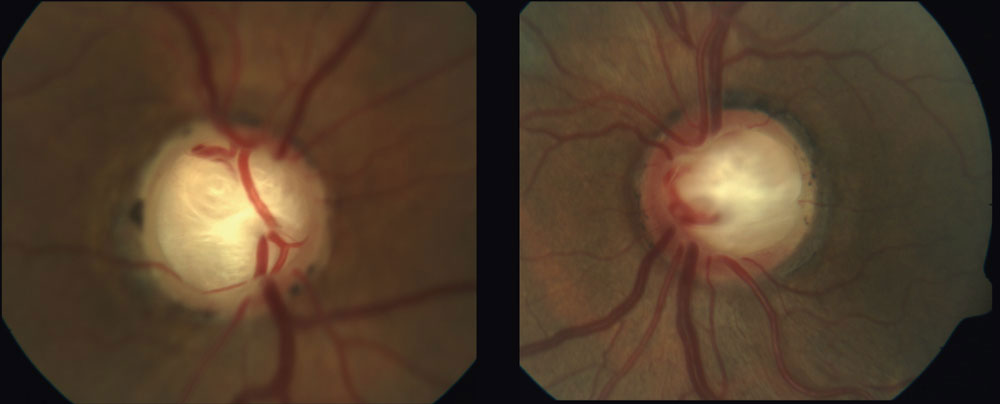 |
|
Analyzing the ONH using OCT-A could reveal mechanistic differences related to NTG development. Click image to enlarge. |
A recent multicenter, prospective cohort study in American Journal of Ophthalmology found that normal-tension glaucoma (NTG) suspects who had baseline microvasculature dropout or a lower laminar deep vessel density on OCT-A had a higher risk of disease progression.
The analysis included 307 eyes from 307 NTG suspects who have an IOP within the normal range. Other participant characteristics include a suspicious optic disc, but without definite localized retinal nerve fiber layer (RNFL) defects, and a normal visual field.
The study authors measured vessel density in the intradisc region via OCT-A images of the deep vascular layers. The main outcome measure was conversion to NTG, which was defined by a new localized RNFL defect in the superotemporal or inferotemporal region, or the presence of a glaucomatous visual field defect on two consecutive tests according to the pattern standard deviation plots, according to the researchers.
Disease progression was observed in 23.8% of the 307 NTG suspects after a mean follow-up of 53.18 months. The data showed that detection the rate of microvasculature dropout was significantly higher in suspects who progressed to NTG (50.7%) when compared with those who did not (6.4%).
Additionally, the study authors reported that the macular deep vessel density and laminar deep vessel density were significantly lower among suspects who progressed to normal tension glaucoma. Conversion to NTG was also significantly associated with the presence of microvasculature dropout as well as lower laminar deep vessel density.
“These findings suggest that analyzing the ONH using OCT-A could reveal mechanistic differences related to normal tension glaucoma development,” the study authors noted in their recent paper. “Additionally, OCT-A can be used to identify suspects more susceptible to normal-tension glaucoma development due to the presence of microvasculature dropout and the status of the deep laminar vessel density.”
Jung Y, Park HYL, Shin H, et al. Microvasculature dropout and development of normal tension glaucoma in glaucoma suspects. The Normal Tension Glaucoma Suspect Cohort Study. Am J Ophthalmol. August 3, 2022. [Epub ahead of print]. |

